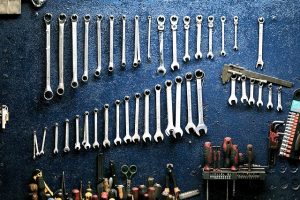
From wrenches and cutting bits to eyeglass hinges and telephone plugs, metal injection molding is used to create a wide range of products. A form of injection molding, it involves filling a mold cavity with raw material. Metal injection molding is essentially a variation of plastic injection molding. Rather than creating plastic objects, though, it’s designed to create metal objects. To learn more about metal injection molding and how it works, keep reading.
Overview of Metal Injection Molding
Pioneered in the 1970s by tech entrepreneur Raymond Welch in the 1970s, metal injection molding is a molding process that involves feeding pellets into a hopper where they are then heated and injected into the mold cavity. As the pellets fill the mold cavity, they take its shape to form a solid object. The object can then be removed or released from the mold cavity after it has cooled.
The pellets used in injection molding aren’t made entirely of polymer, however. They contain a mixture of polymer, metal and a binding agent. The combination of these ingredients creates special properties, such an exceptionally high density, that’s not found in other feedstock materials. The molding machine will heat the pellets, causing their respective ingredients to further mix together. And once injected into the mold cavity, the material will form the object.
Benefits of Metal Injection Molding
Metal injection molding is often used to create small objects that require a high density. It’s not uncommon, in face, for objects to feature a density of up to 99% when created using this molding method. Metal injection molding uses a combination of polymer, metal and a binding agent that, when exposed to heat and pressure, fills a greater amount of space inside the mold cavity than that of other molding processes.
In addition to a high density, metal injection molding can be used to create particularly small objects. As previously mentioned, the hinges in eyeglasses are often made using metal injection molding. If you inspect each side of an eyeglass frame, you’ll see a small hinge connecting them to the lenses. Many manufacturing companies use metal injection molding to make these small hinges.
In Conclusion
While somewhat complex, metal injection molding is a versatile and effective molding process. It involves injecting pellets of polymer, metal and a binding agent into a mold cavity. When heated and pressurized, these ingredients will mix together to create a solid object while inside the mold cavity.
No tags for this post.